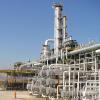hello
i want to know what effect of Non-standard Reid vapor pressure (very low or very high value of TVR) of gasoline in engines.
thanks
|
|

Posted 30 August 2017 - 12:11 PM
hello
i want to know what effect of Non-standard Reid vapor pressure (very low or very high value of TVR) of gasoline in engines.
thanks
Posted 30 August 2017 - 10:47 PM
You can think of Reid Vapor Pressure (RVP) as a measurement of C4. Mixing butanes into gasoline can help improve many of the parameters that gasoline is measured by. However, the butanes tend to vaporize, with the fuel remaining in the liquid state changing character and perhaps no longer meeting specifications. The RVP spec is designed so that the fuel buyers are not tricked by the fuel sellers into purchasing what is essentially off-spec gasoline mixed with butanes. You can estimate the amount of butanes in the gasoline directly from the RVP reading. For example, if the fuel has an RVP of 4 psi, you can estimate there is about 4% C4 in the fuel. I think there is usually not a minimum RVP spec for fuel -- only a maximum RVP allowed. The fuel behavior in the engine is better characterized by Research Octane Number (RON) and Motor Octane Number (MON). If the RON and MON are the same for two fuels, the engine will not be affected if the fuels have a different RVP.
Posted 02 September 2017 - 04:10 AM
You can think of Reid Vapor Pressure (RVP) as a measurement of C4. Mixing butanes into gasoline can help improve many of the parameters that gasoline is measured by. However, the butanes tend to vaporize, with the fuel remaining in the liquid state changing character and perhaps no longer meeting specifications. The RVP spec is designed so that the fuel buyers are not tricked by the fuel sellers into purchasing what is essentially off-spec gasoline mixed with butanes. You can estimate the amount of butanes in the gasoline directly from the RVP reading. For example, if the fuel has an RVP of 4 psi, you can estimate there is about 4% C4 in the fuel. I think there is usually not a minimum RVP spec for fuel -- only a maximum RVP allowed. The fuel behavior in the engine is better characterized by Research Octane Number (RON) and Motor Octane Number (MON). If the RON and MON are the same for two fuels, the engine will not be affected if the fuels have a different RVP.
thank you
in our refinery when making gasoline and verifying compliance, several analyzes must be performed such as
Valves On Low Pressure Steam ServiceStarted by Guest_Ali4269278331_* , 15 Apr 2024 |
|

|
||
Steam Pressure Requirements For Limpet Batch ReactorStarted by Guest_golegolegole_* , 10 Apr 2024 |
|

|
||
Acumulador De Vapor En Una Planta TextilStarted by Guest_Valeriacortez11_* , 15 Apr 2024 |
|

|
||
Pressure Control Valve Issues For Gsw LinesStarted by Guest_fahadazh_* , 29 Mar 2024 |
|

|
||
Vapor PressureStarted by Guest_Hamza1111_* , 23 Mar 2024 |
|

|